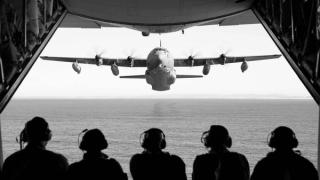The US-Australia Alliance is evolving to meet challenges close to home in new domains: critical materials; ‘trusted partner’ supply chains; COVID and health security; and forming a key plank in the Quad.
Professor Simon Jackman
CEO of the United States Studies Centre at the University of Sydney
Alliances evolve – or should be expected to. Each partner will update assessments of its own interests and priorities; this is especially the case for open, democratic societies and in an era of rapid geostrategic and technological change.
Furthermore, bilateral relations between nations do not sit in a vacuum, untouched by each partner’s relations with others, or changes in global or regional strategic balances.
Australia’s Alliance with the United States is no different. As the preceding chapters show, the security and strategic challenges animating the Alliance changed during its 70-year history. Key transitions for the Alliance included the development of satellites as indispensable intelligence assets through the Cold War, the Vietnam conflict and the September 11 attacks.
Broader, closer challenges
Another transition is underway today, perhaps the most profound in the history of the Alliance. Australia’s regional neighbourhood – the Indo-Pacific – is host to rapid geostrategic change, chiefly driven by China’s assertiveness, ambition and authoritarianism, a decline in American power relative to other nations since the post-war establishment of American primacy, and an openly fractious debate within the United States about bearing the costs of global leadership. These dilemmas are especially acute for Australia, driving urgent, vigorous and clear-eyed assessments of Australia’s strategic circumstances and opening a new chapter for the Alliance.
China is challenging the liberal, post-Second World War order in a manner fundamentally different to the sometimes-existential challenge posed by the Soviet Union during the Cold War. The United States didn’t record massive trade deficits with the Soviet Union at any point in the Cold War as it does now with China, and as it has for decades. Similarly, at no point in the Cold War did Australia count the Soviet Union as its largest trading partner, nor far and away the largest destination for Australian exports. This makes China’s ‘economic coercion’ of Australia at least a plausible lever of statecraft, while never realistic for the Soviet Union through the Cold War.
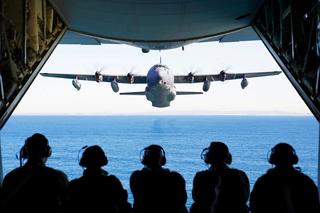
China’s ambitions are broad, aspiring not merely for military modernisation and capabilities to deter adversaries, but for continued economic growth, technological primacy and deference, driving competition with the developed democracies across multiple domains.
China’s displeasure with recent Australian policies and announcements is well known. In recent years, China has either imposed tariffs or imposed a mix of official and unofficial restrictions or bans on an array of Australian exports: barley, wine, beef and coal chief among them. Prices for some of these commodities have soared in China as a consequence, most notably for coal, a testament to its resolve and capacity to bear the costs of acting on its displeasure with Australia.
The Alliance in the Indo-Pacific
This rapid pace of geostrategic change – centred on the Indo-Pacific, spanning so many realms and of such consequence for Australia’s security and prosperity – has opened a new chapter in the history of the Alliance.
Issues ranging significantly beyond military-to-military cooperation now rank high on the Alliance agenda, with Australia and the United States taking up challenges with little or no Alliance history to draw upon. Examples include partnering in regional responses to COVID-19 (with vaccine production, administration and distribution around the Indo-Pacific announced as a key priority for the Quadrilateral Security Dialogue, or Quad, in March 2021), climate change, the Indo-Pacific infrastructure race, cybersecurity and research and development for frontier technologies. Engaging with other allies and partners in the region (e.g., New Zealand, Japan, India and Singapore) has become vital to ensure meaningful progress and success across this broad set of challenges.
The broader goal of collective action among democratic allies and partners is not new. After the Second World War, international institutions such as General Agreement on Tariffs and Trade (the precursor to the World Trade Organization or WTO) were created to help solve a coordination dilemma: how to ensure nation-states contribute to the global, collective good of unencumbered trade without ‘free-riding’ or shirking the domestic costs of free trade (dodged by tariffs and quotas on imports and other forms of protectionism). While Australia and the United States can act together – building on the Alliance and the Australia-United States Free Trade Agreement, or through more novel formations like the Quad – institutional mechanisms already exist for maintaining an open, rules-based international trading system. As trade, technology and research and development partnerships and investment are increasingly used as tools of statecraft, institutions that compel ‘good behaviour’ in these domains become increasingly important. Australia and the United States have a joint interest in reforming the WTO and its dispute resolution mechanism to ensure it remains fit for purpose, imposing costs on nations using trade barriers as a tool of coercive statecraft, or relying on modern-day mercantilism as an unfair shortcut to economic development and national wealth.
‘Diversification’ has become a key element in discussions as to how to blunt China’s economic coercion of Australia. On this score, the trust built over the 70 years of the Alliance with the United States confers many advantages to Australia. Australia is well-placed to benefit from ‘ally-shoring’ as the United States and allies seek to secure their supply chains, critical goods trade and compete with China for scientific and technological primacy.
This strategy of diversification among networks of allies and trusted partners also underscores the importance of long-standing elements of the Alliance not immediately related to defence and security. Since the Second World War, no single country has continually helped Australia to be more innovative than the United States. Australia now receives more investment from the United States than any other country, with the largest US footprint occurring in the sectors most critical for Australia’s future economic growth. The United States is also Australia’s largest services trading partner. Given affinities in language, business culture and embracing technology, Australia and the United States have an opening to take a bold step in driving the creation of an Indo-Pacific region digital trade agreement, which would allow the United States to recover from the missed strategic opportunity when it abandoned the Trans-Pacific Partnership.
This brings us back to the Pacific, where the Alliance’s story began.
Strategic thinkers, policymakers, defence personnel and diplomats from both Australia and the United States have come to a similar conclusion: the Indo-Pacific is the site of the world’s most pressing geostrategic challenges, now and for the foreseeable future, and those challenges are too broad, too big and too urgent for any one country to respond to. The United States and long-standing allies such as Australia and Japan are therefore rejuvenating and revitalising their alliances, with considerable creativity and dexterity in networking existing alliances, incorporating other willing partners, signalling credibility and demonstrating capacity for collective action.
The resultant shifts in mindset and operational focus for Australia’s Alliance with the United States should not be underestimated. The Alliance’s geographic focus has now shifted to the Indo-Pacific after decades of military operations in the Middle East. Military operations – or preparing for them – remain core Alliance business. But the Alliance agenda has swelled beyond warfighting, to now include identifying and developing strategic technologies of the future, revitalising international institutions, defending against coercive economic statecraft and securing supplies of critical materials. The Alliance is now also a bulwark partner of substance to less resilient Indo-Pacific partners, helping them develop energy and communications infrastructure, combat COVID-19, train public servants, militaries, police and jurists, and to resist foreign interference.
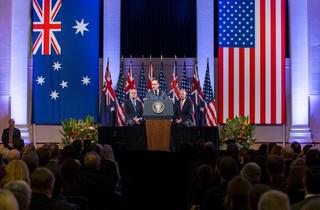
Above all, the Alliance is shifting from being overwhelmingly focused on the defence of Australia and the United States, to being part of a broader ensemble of allies and partners – centred on the Indo-Pacific – developing and implementing collective strategies addressing the wide set of issues summarised above.
Forged in the aftermath of a worldwide battle over the nature of our global system and ways of life, the US-Australia Alliance now holds more significance than during any other time in its seven decades of existence. Today, just as when it was signed in 1951, the Alliance is focusing on regional challenges of global importance. Just as in 1951, the Alliance is a key component of a global order that favours the principles of free markets, free and fair elections and individual liberties.
Yet at the same time, the differences between 2021 and 1951 could not be starker.
In 1951, the United States was the sole security provider in the region, with the major regional threats being a nuclear war with the Soviet Union and communist insurrections. Seventy years ago, it was undeniable that the United States was the world leader in all things military, scientific and economic, and security threats emanated from places far away from US and Australian heartlands. At the signing of ANZUS, the internet and a globalised economy did not yet exist, offering even capable adversaries few avenues to threaten or compete with democratic nations.
Ultimately, Australia is a more capable Alliance partner now than in 1951, and a good thing too, given the globe’s geostrategic focus lies much closer to Australia than in 1951, and given the United States no longer can do as much of the heavy lifting as it did in the Second World War and its aftermath. The Alliance has never been as central to Australia’s national interest and, hence, Australia’s contribution to Alliance burden-sharing must be expected to grow.
We commemorate the 70 years of the Alliance not to unduly romanticise the past. Cloaking the Alliance in nostalgia or an excess of sentimentality is not only unrealistic but may be counter-productive, undermining the goal of having the Alliance serve Australia’s national interests. That is especially the case today, as Australia and the United States face challenges that the architects of the ANZUS Treaty could not have foreseen.
Instead, in looking to the 70 years of the Alliance we see a deep reservoir of trust, capability, resolve and goodwill binding the United States and Australia. Quite simply, this makes the Alliance Australia’s single most valuable strategic asset in meeting the challenges before us.
The critical minerals future
From climate change to artificial intelligence, critical minerals will continue to play a key role in the world’s economic future. The ability to maintain access to them, therefore, will only become more critical to the global economy. Beijing’s increased use of economic coercion and willingness to cut off the supply of them to the world, combined with the fact that China is the world’s largest producer of 18 of the 30 critical materials as well as a near-monopolist (more than 70 per cent market share) for five of them, provides a worrying challenge for the world.
Amid an urgent need for governments to re-evaluate their efforts for maintaining supply chains for critical minerals, the US-Australia Alliance has made the issue a primary focus of multiple Australia-United States Ministerial Consultations in recent years, resulting in the development of a US-Australia Critical Minerals Plan of Action.

One outcome of such efforts involves Australian mining firm Lynas, the world’s largest non-Chinese producer of light rare earths. In the last two years, Lynas has been awarded multiple contracts with the US Defense Department for building US-based facilities for processing critical minerals. It is expected that the completion of just one of the facilities alone will allow the US plant to produce around a quarter of the worlds’ supply of rare element oxides.
Professor Brian Schmidt AC
Vice-Chancellor of the Australian National University (2016-), Nobel Prize in Physics (2011)
The US-Australian relationship over the past 70 years has thrived less because of shared threats, and more from taking advantage of opportunities. Despite shared terrible conflicts, American pre-eminence in the region has never really been in question. The overarching stability has enabled a world order to emerge where our respective economies and democracies have strengthened, our cultures and societies have co-mingled, and a deep level of trust has emerged between the two nations at both a people and governmental level.
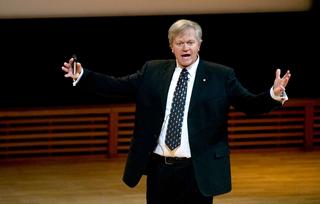
But the last decade has foreshadowed more challenging times ahead. From within, our democracies have weakened with widening gaps between rich and poor, and public confidence in our governments has reached historic lows. Externally, the rise of the non-democratic state China with its economy likely to equal the combined Australian-American economies in the near-term future means pre-eminence in the region can no longer be assured.
The eighth decade of the US-Australian relationship may well turn out to be the most pivotal. The United States will need to look more to its allies like Australia to strategically forge a leadership position together rather than simply leading the way. Our democracies need to learn from each other’s strengths and weaknesses and learn to better unite our citizens around the values we share.
Dennis Richardson AC
Secretary of the Department of Defence (2012-17), Secretary of the Department of Foreign Affairs and Trade (2010-12), Australian Ambassador to the United States (2005-10), Australian Director-General of Security (1996-2005)
Where does the Alliance stand today? I believe it is stronger than its origins would suggest and stronger than the wording of the ANZUS Treaty would imply.
The United States needed to be convinced about the desirability of a treaty. It is likely a US administration today would respond more positively to any such suggestion. Australia is simply more important to US strategic interests than in 1951. Also, in the absence of a treaty today, Australia could be tempted to seek one, just as we reached out to the United States in 1940 when we established in Washington DC our first independent diplomatic mission outside London.

As treaties go, ANZUS is relatively weak; it is significantly short of the commitments embedded in NATO. But, today, the United States probably has a stronger and deeper relationship with Australia than with many of its NATO allies. That reflects strategic interests and circumstances, and the work of successive governments in adding substance to the relationship, whether through joint facilities such as Pine Gap or the rotation of Marines through northern Australia.
As power relativities continue to shift, the Alliance will become even more important to both countries; underpinned, in part, by shared values and dictated by national interests.
Ambassador John Berry
US Ambassador to Australia (2013-16), President of the American Australian Association (2016-)
The anvil of the Second World War forged an entirely new and unbreakable bond between Australia and the United States made manifest in the ANZUS Treaty 70 years ago. That still holds true today.
This Treaty and bond ‘strengthen the fabric of peace’ in the Pacific for all and ensure each of our nations need never stand alone against any aggressor. It cements our deepest values: freedom, human rights and the rule of law as a bulwark against the storms of time.
My father learned of this bond under fire with his Australian mates during the battles of Guadalcanal and the terrible progress up the Indonesian island chain. His unit, the First Division of the US Marine Corps, still honours this bond with their fight song ‘Waltzing Matilda’ to this very day.
I learned of it at his knee and during my service as the US Ambassador to Australia. As someone who lives only two blocks away from the World Trade Center Memorial in New York City, I regularly say a prayer for the Americans and Australians killed during that attack on September 11 with a profound thanks for the fearless leadership of former Prime Minister John Howard, who formally invoked the ANZUS Treaty on that terrible day. That single exercise of our Treaty will never be forgotten.
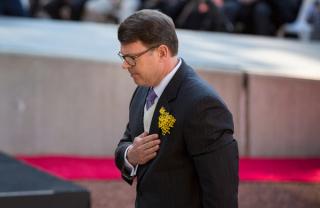
Happily, the Treaty has accomplished far more than the important defence described above. It has fostered economic development that is fast approaching US$2 trillion between our innovative nations. It has deepened respect for our Indigenous people and embraced cultural and artistic exchanges that have enriched the whole world.
We have helped develop leaders for the future through scholarly exchanges between our nations and joint medical research to advance human health around the globe. Together we continue to explore beyond the lands we live, to the Moon, Mars and beyond.
Here at the American Australian Association in New York, whose birthday precedes the Treaty by three years, we are proud to have played a small part in deepening the bonds between our two great nations over our 73-year history. We are also proud to have awarded more than US$13 million in scholarships to more than 900 graduates, veterans and artists in addition to many more millions in disaster relief support across the Pacific. It is but one thread in a tapestry that is rich and endless and continues to expand each day.
More than 10,000 miles may separate us, 14 hours may stand between one’s day and the other’s night and the greatest ocean may make it seem like we are a world apart. Yet we have never been closer than we are today.
In celebrating our many differences, Americans and Australians have always come together under a common belief in freedom, openness and optimism to unite our two great countries. With ambitious vigour, we forge new paths to progress and embrace our responsibility as world leaders and as treaty signatories. Long may it be so!
His Excellency the Honourable Arthur Sinodinos AO
Australian Ambassador to the United States (2020-), Chief of Staff to Prime Minister John Howard (1997-2007)
It is 70 years since the ANZUS Treaty was signed and 20 years since it was invoked in the shadow of the 9/11 attacks.
Critics dismiss the Treaty as a relic of the Cold War or as somehow inimical to our national interest. Neither is true; the Treaty is as relevant as ever and we are the stronger for its continued existence.
The Treaty is built on solid foundations of national character, language, heritage and the commitment to democratic norms and values. Above all, the Alliance formalises a comradeship forged in the crucible of war.
In the First World War, some of the newly arrived American troops fought under the command of General Sir John Monash at the pivotal Battle of Hamel in 1918. This was the first time Americans fought under non-American officers.
That partnership was deepened and cemented by the Pacific theatre in the Second World War. For Australia, it was a matter of survival following the fall of Singapore and the downward thrust of Japanese forces into New Guinea. After Pearl Harbor, the United States could no longer stand aside from threats to the global order.
We fought to create a new world of peace and prosperity grounded in the rule of law and decent, humane universal values. Our Alliance is about what we are for, not what we are against.
Nor was the new order exclusive or chauvinistic in character. In one of the great acts of enlightened self-interest in human history, the United States united friend and foe in the creation of a new global rules-based order. New bodies were created to regulate international relations, restore economic stability and encourage global growth to the benefit of all. The United States put behind it the isolationism of the inter-war period and embraced a leadership role that continues.
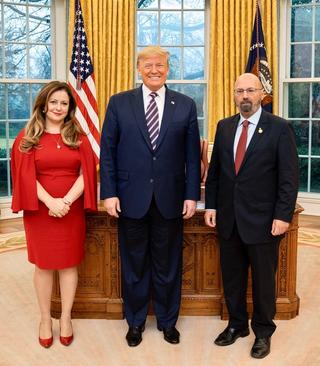
There are those in Australia and abroad who criticise our Alliance with the United States as needlessly exposing us to risks or overseas interventions. It would have been tempting for Australia to eschew formal commitments in the expectation that the United States would always come to our aid in extremis. But that is not the Australian way. We take our fair share of responsibility for our defence and security but recognise that we are stronger together in pursuit of shared values and interests. The ability to share information, operate interchangeably and coordinate activities provides security benefits that we could not hope to replicate on our own.
With the United States, we also embraced erstwhile adversaries in this endeavour. Notwithstanding lingering anti-Japanese sentiment on the part of some Australians, the Australian Government entered into the Agreement on Commerce with Japan in 1957. That took political courage but paved the way for a partnership between Australia and Japan that continues to grow in strategic value for both countries and the region. The network of American alliances in Europe and Asia is a unique advantage that further enhances the value of ANZUS to Australia.
The 9/11 attacks in 2001 ushered in the global War on Terror. Australia’s Prime Minister, John Howard, famously invoked the Treaty in response to those attacks. We were not alone; NATO and the Organization of the American States also invoked their treaty obligations in support of the United States.
John Howard was in Washington DC when the attacks occurred. He saw up close the impact on the American people. He understood that this was an attack on all of us, an attack on the open society and secular, democratic norms.
Today the number one geopolitical issue is the rise of China. That rise is good news for the world. A strong and prosperous China that has lifted so many of its citizens out of poverty is in everyone’s interest. China has benefited from rules that promote international trade and investment, including the World Trade Organization.
As China has grown, it has become more assertive in prosecuting its national aspirations and testing the global rules-based order. As Allies, we seek to persuade China that its interest is better served by playing a constructive role in that order. It is a strong near-peer competitor to the United States in economics and trade, critical and emerging technologies, and defence and security. There are areas of cooperation including climate change, nuclear matters and the pandemic. But human rights abuses in Xinjiang and the treatment of Hong Kong and Taiwan are being called out. President Biden speaks of the struggle between democracy and autocracy to shape the world order over the next decade.
The ANZUS Treaty is more relevant than ever. Australia and the United States have enduring values and interests that bind us ever closer together.
Here’s to the next 70 years.
The Honourable Brendan Nelson AO
Director of the Australian War Memorial (2012-19), Australian Ambassador to Belgium, Luxembourg, the European Union and NATO (2009-12), Minister for Defence (2006-07)
The US customs officer at Fort Worth looked at me, back to my official passport and back at me. His thick Texan accent assumed a deferential tone: ‘The Australian War Memorial. We need one of them here. My marine son came back from Afghanistan last year talkin’ about the magic Aussies. I told him that whenever we pick a fight, the Australians are the first ones in with us, and the last ones out.’
And so it has been since 1918.
The past is vital to our understanding of the future and to guiding us as humankind passes from one age to the next.
Born of the strategic defeat of Japan by the US and Royal Australian Navies in the battle of the Coral Sea in May 1942, the ANZUS Alliance was formalised in 1951 as Russia acquired nuclear weapons and a war raged on the Korean peninsula.
I have seen through its political, economic, diplomatic and defence pillars, the bedrock for not only our security in every sense of the word, but for belief in ourselves and confidence in the future. The essential character of our two nations is informed by common worthwhile, intrinsic virtues – values. These truths by which we live are enshrined in Thomas Jefferson’s promissory constitutional note to not only Americans, but free people in open democracies: ‘We hold these truths to be self-evident, that all men are created equal, that they are endowed by their Creator with certain unalienable Rights, that among these are Life, Liberty and the pursuit of Happiness.’
Not a day should go by in Australia without us giving thanks for American sacrifice in the Pacific in the Second World War – 300,000 casualties, 103,000 dead, half those bodies never found.
Of this, I said to US Senator John McCain at the Australian War Memorial in May 2017, ‘What is most important for us as Australians, is to be clear about who we are and in what we believe. This place reminds us that our interests are our values.’ He replied, ‘And our values are our interests.’
Whether it be Australian David Kilcullen sitting alongside General David Petraeus as his senior advisor in Baghdad, Australian officers on the command team for General John Allen in Kabul or an Australian commanding all Special Forces across Afghanistan, Australia is a deeply trusted ally of the United States. A small group of NATO nations led by the United States met late one Friday night at NATO in March 2011. Desperate to avoid a humanitarian disaster from Gaddafi’s tanks headed to Benghazi, one other country was invited – Australia.
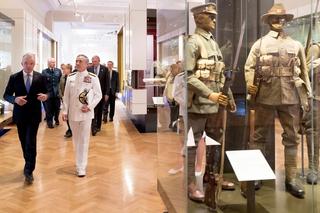
My experience has always been that whether it be the Oval Office, West Wing, Capitol Hill, Pentagon, State Department or key agencies, its occupants and office bearers have always been accessible, open and willing to help.
An Alliance born of intelligence sharing and war in defence of common values provides the framework for trust 70 years on. It is a trust that can only be given by an Alliance built not of bureaucratic formality, but of the handshake and dialogue of leaders. That trust enables confidence in trade, business and investment.
Australia’s most important economic partner is the United States.
The Deloitte report commissioned and released by AmCham in 2020 reveals that Australia’s two-way trade with the United States and the income generated by US investment in our country generates seven per cent of Australia’s GDP. The United States is the largest source of foreign investment in Australia. The gap between our savings and investment requirements is four per cent of GDP. Our ability to grow, create wealth and jobs relies heavily on access to US capital markets.
Boeing has invested heavily in Australia, employing almost 4,000 Australians across commercial aircraft manufacturing, defence, services and research and development; the largest Boeing presence outside the United States. Reflecting confidence afforded by the Alliance, Boeing has made the company’s largest investment of its type outside the United States in the Airpower Teaming System (ATS) – Loyal Wingman.
Conceived, designed, produced, built and now flown in Australia in under four years, this partnership with the RAAF has delivered the first military aircraft built in Australia in 50 years. Our ambition is to export it from Australia.
Further, Boeing commercial aircraft including the 737, 747, 777 and 787 Dreamliner fly with components produced at the company’s ‘home’ of Australian advanced manufacturing – Fishermans Bend in Melbourne.
Facing the most consequential geopolitical realignment in our lifetime, we must now deepen the Alliance across areas as diverse as food security, critical minerals, supply chains, biotechnology, defence capabilities and combat systems.
There is always a tendency, human beings that we are, to take for granted that which is most important to us. For seventy years, the ANZUS Alliance has been the foundation for Australia’s security and prosperity. Deeply rooted in common values and forged in war, it is the framework for our common belief in the future.
His Excellency the Honourable Kim Beazley AC
Governor of Western Australia (2018-), Australian Ambassador to the United States (2010-16), Deputy Prime Minister of Australia (1995-96), Minister for Defence (1984-90)
Contemporary events have changed the balance in the ANZUS relationship once again. One was the 1990’s revolution in military affairs. Its effects have been deepened by a further technological revolution in weapons systems – the growing importance of cyber, artificial intelligence in computing, electronic warfare and surveillance technologies.
Australia now has a fifth-generation Air Force and it is all American. Super Hornets, Growlers, F-35s, Poseidon surveillance/ASW aircraft networked and integrated with, among other things, US satellite systems and our over the horizon radar system developed originally with the Americans. Australia’s Army and Navy have been similarly drawn into the networked battlefield. Our equipment is overwhelmingly American. When I was Ambassador to the United States, the Embassy was managing 400 foreign military sales agreements. We were spending A$13 million a day on American equipment.

The strategic environment has changed dramatically as well. We are no longer operating in a strategic backwater but at the focal point of the global political and economic system. All of Asia has risen in economic and military capability. At the heart is the rise of China. In the 1987 Defence white paper, China rated two anodyne mentions. Now its military, technological and economic capability has our focus. Since the Obama administration, the United States has been struggling to reprioritise the region. The United States’ old commitment to its San Francisco alliance system, of which ANZUS is part, remains. Those commitments with these changes are now more challenging. For us, the old notion of relatively relaxed ‘warning time’ has disappeared. The San Francisco system is now balanced with a US commitment to multilateral diplomacy. APEC and the East Asia Summit have helped but the United States also looks to the Quad of India, Japan, Australia and the United States. These are not military alliances.
The United States is anxious for effective diplomacy. It does not want war with China, though it must be prepared for it. Particularly with the Biden administration, it wants economic and diplomatic partnerships in which it plays a role with partners it respects. We have long been engaged in regional diplomacy. The United States needs from us not a narrowly based military dependent but a party with ideas, focused and capable of initiative. We must deliver it even though at the back of our minds we know without the relationship and the joint facilities we would be deaf and blind and with an unaffordable military task.
Andrew Liveris AO
CEO and Chairman of the Dow Chemical Company (2004-18)
Australia has been one of the great beneficiaries of post-war US-led efforts to promote a fair, accessible trading regime. The willingness of the United States to engage China in that system and to promote a reliable trading environment was, itself, massively beneficial to Australia.
US backing of the WTO agenda was – at least – powerful cover for Australia’s interest in promoting open markets and it may, I’d imagine, have been a stimulus for the free-trading mindset that encouraged successive Australian governments (from Whitlam’s 25 per cent tariff cuts in 1973 and onwards) to dismantle artificial trade barriers and pursue robust competition in both external and domestic markets.
On most recent data, nine per cent of people globally are living in poverty. In 1990 that number was above 36 per cent. There can be no doubt that the engagement of China and India and many other nations in fruitful global trade opportunities, fostered and strongly led by US influence, was a big factor in improving so many people’s lives. So, it is disturbing that we are today taking steps back from the global trading regime that enabled so much prosperity.
China has not kept faith with the United States on the terms of its trade. Inevitably, the United States has a firm bipartisan resolve to respond. Australia’s position as a firm security ally of the United States has raised extra tensions as China’s economic power has begun to manifest itself in geopolitical tensions. Some people see this as a global ‘decoupling’ from China and its interests. I do not, even as we all face the obvious risks.
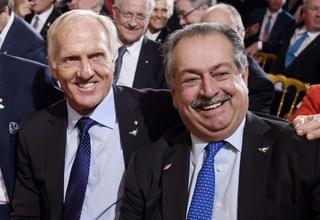
The United States and Australia – not to mention our friends in Japan, India, South Korea, Vietnam, Thailand and Indonesia, among many others – will maintain substantial trade with China. The challenge for Australia is to find a solution to the sources of tension – not at present a ready prospect. So, there will be friction for some time ahead.
Opportunity lies in this new period of relations, especially with the United States. Australia, perhaps more than others, has every incentive to correct its path on some essential issues and – again – a US-led force appears ready to put wind in our sails.
The evolving US response to today’s trade issues is, in fact, more competition. What was initially a defensive reaction is now a focus on ensuring that China does not reach uncontested competitive strength in any areas of critical purpose – notably security. Technology is today’s field of power contest.
I can say with certainty that I’ve always been proud of my birthplace. I have, however, been disappointed, and one heartfelt disappointment is, ironically, the field I chose and that gave me such a rich experience of life: manufacturing. Objectively, Australia’s competitiveness in manufacturing ranks with countries like Switzerland, Finland and Sweden (according to Deloitte). Yet we don’t have numerous globally-ranked, high-value manufacturers – and each of those countries does.
Our failure to foster manufacturing leaves us with limited opportunity to commercialise the intellectual and innovative capability of our citizens and leverage the power of our highly ranked universities. We are looking a bit like the condition of our rugby team, the Wallabies, at the moment – terrific talent but too little attention to the enabling resources.
My view of the road ahead was put to the government in a report by its manufacturing task force for the National Centre for Cultural Competence (a joint venture between the Australian Government and the University of Sydney). I aimed in that work to take lessons from the United States, work I had first engaged in with President Barack Obama and which has borne ample fruit. For Australia, we suggested six areas of focus and a firm approach to making the money the government spends work harder at bringing Australian opportunities to scale.
I’m pleased to say that Australian manufacturing is now getting serious attention. And it could not come at a better time. The initiatives of the Morrison government, which I understand have bipartisan support, will stimulate manufacturing initiatives that align Australia again with global strategies and US leadership.
As the United States shows signs of vigorous recovery, the opportunity to find strong synergies for Australian manufactures should be a great motivation. There’s ample room: Australia’s global trade surplus last year was more than A$70 billion – but US trade left us in deficit by about A$30 billion.
Australia is among world leaders in rolling out 5G telecommunications, an enabler of many advanced technologies that improve productivity and lend competitive strength to those who focus on high-value, globally-competitive manufactures. This is the cutting edge of the contest that has US and Chinese attention. Australia has settled the decision on which side of the infrastructure divide it will stand. But having done so, the opportunities are more about what we are good at than any retreat to literal bilateralism.
The next few years and decades will, I think, offer rich rewards for efforts that carefully align with the competitive opportunities emerging globally and especially those where Australia’s relations with the United States offer particular value.
The US-Australia Alliance, built over the last century, standing side by side in times of war, defending the values of freedom and equal rights for all people, being like-minded on sharing each other’s resources on a fair and equitable basis, where the win-win was found, a win for the world, and a win for our respective countries, will only continue to grow in this century. I have confidence this generation and the following ones will reap the benefits of this enduring friendship.





